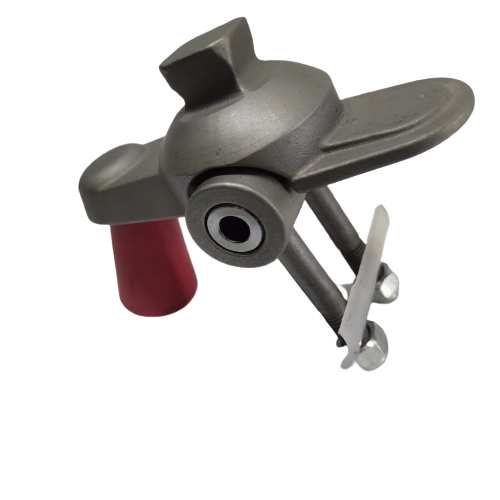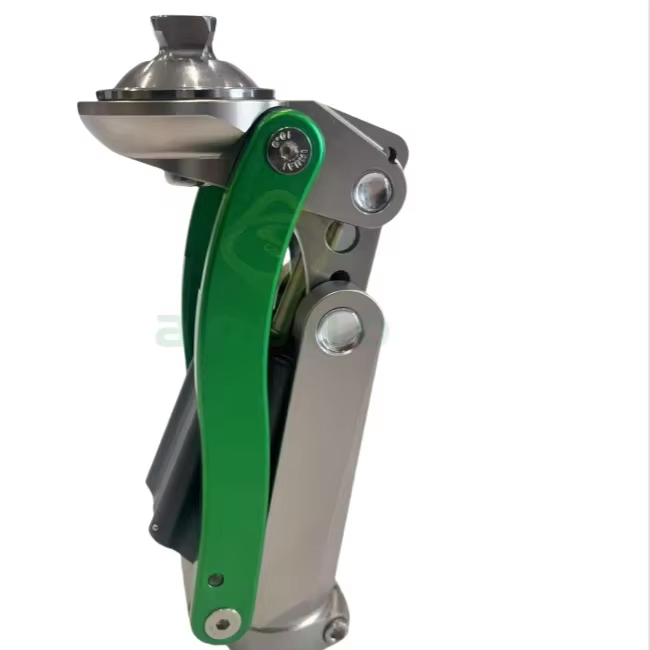What Makes an Artificial Ankle Joint Different from Other Joint Replacements?
Release Time:
Nov 09,2025
What Makes an Artificial Ankle Joint Different from Other Joint Replacements? Introduction to Artificial Ankle Joints The evolution of medical technology has paved the way for innovative solutions in joint replacement therapy. Among these advancements, **artificial ankle joints** have emerged as a viable option for individuals suffering from severe ankle pain due to arthritis, trauma, or other deg
What Makes an Artificial Ankle Joint Different from Other Joint Replacements?
Introduction to Artificial Ankle Joints
The evolution of medical technology has paved the way for innovative solutions in joint replacement therapy. Among these advancements, **artificial ankle joints** have emerged as a viable option for individuals suffering from severe ankle pain due to arthritis, trauma, or other degenerative conditions. Unlike traditional joint replacements, artificial ankle joints offer unique benefits and considerations that set them apart. In this article, we will discuss the distinct features of artificial ankle joints, the surgical techniques involved, and the rehabilitation processes that patients undergo post-surgery.
Understanding Joint Replacements: A Brief Overview
Joint replacements have become a common surgical solution for chronic joint pain. While knees and hips are the most frequently replaced joints, the **ankle joint** is gaining attention due to advancements in surgical technology and materials. The ankle joint, which connects the foot to the leg, is crucial for mobility and balance. Its replacement involves complex considerations due to the intricate nature of the joint's anatomy and its range of motion.
The Anatomy of the Ankle Joint
The Structure and Function of the Ankle
The **ankle joint** is a complex structure formed by the tibia, fibula, and talus bones, along with ligaments, tendons, and cartilage. Its primary functions include:
- **Weight bearing:** The ankle supports the body’s weight while standing, walking, and running.
- **Mobility:** It allows for a wide range of movements, including dorsiflexion, plantarflexion, inversion, and eversion.
- **Stability:** The ankle joint provides stability during various activities, aiding in balance and coordination.
Common Ankle Conditions Leading to Replacement
Several conditions can deteriorate the ankle joint, leading to chronic pain and reduced mobility. Common causes include:
- **Osteoarthritis:** This degenerative condition leads to the breakdown of cartilage, causing pain and stiffness.
- **Rheumatoid arthritis:** An autoimmune disorder that can severely affect the joint and surrounding tissue.
- **Injuries:** Severe fractures or ligament damage may necessitate joint replacement when conservative treatments fail.
Artificial Ankle Joint vs. Other Joint Replacements
Materials Used in Artificial Ankle Joints
One of the primary differences between artificial ankle joints and other joint replacements is the materials used. Artificial ankle joints are typically made from high-quality materials designed for durability and optimal functionality. Common materials include:
- **Titanium:** Known for its strength-to-weight ratio, titanium is often used in the metal components of ankle implants.
- **Polyethylene:** This plastic material is used for the bearing surface to reduce friction and wear.
- **Ceramic:** Some implants use ceramic materials for their excellent wear properties.
In contrast, knee and hip replacements may use a different combination of materials, affecting their longevity and performance.
Design Considerations
The design of artificial ankle joints differs significantly from other joint replacements. While knee and hip implants focus primarily on an articulated design to facilitate smooth movement, ankle implants must accommodate a wider range of motion and the ankle's unique biomechanics.
**Anatomically correct designs** are important in ankle replacements to mimic the natural structure and provide a more natural gait. Some artificial ankle joints are modular, allowing surgeons to customize the implant to suit individual patient anatomy.
The Surgical Procedure for Ankle Joint Replacement
Preoperative Assessment
Before surgery, patients undergo a comprehensive assessment, including imaging studies such as X-rays or MRIs to evaluate the condition of the ankle joint. Surgeons also consider overall health, mobility, and the specific needs of the patient.
The Surgical Technique
The surgical procedure for artificial ankle joint replacement typically involves the following steps:
1. **Anesthesia:** Patients receive either general or regional anesthesia to ensure comfort during the procedure.
2. **Incision:** A careful incision is made on the front or side of the ankle to access the joint.
3. **Removal of Damaged Tissue:** The surgeon removes the damaged cartilage and bone, preparing the site for the implant.
4. **Implantation of the Artificial Joint:** The artificial joint components are securely positioned within the ankle.
5. **Closure:** The incision is closed, and the patient is moved to the recovery area.
Rehabilitation After Ankle Joint Replacement
The Importance of Rehabilitation
Rehabilitation plays a crucial role in recovery following an artificial ankle joint replacement. A structured program helps restore strength, flexibility, and function to the ankle.
Typical Rehabilitation Timeline
- **Immediate Post-Operative Phase (Days 1-3):** Patients typically begin walking with assistance using crutches or a walker.
- **Early Rehabilitation (Weeks 1-4):** Gentle range-of-motion exercises are introduced to promote healing and prevent stiffness.
- **Advanced Rehabilitation (Weeks 4-12):** As healing progresses, strength training and balance exercises are integrated to improve overall mobility.
- **Long-Term Recovery (3-6 Months):** Full rehabilitation aims for a return to normal activities and a gradual increase in physical activity levels.
Potential Risks and Complications
Like any surgical procedure, **ankle joint replacement** carries potential risks and complications. Common concerns include:
- **Infection:** Post-surgical infections can occur, requiring prompt medical attention.
- **Implant Failure:** Although rare, the artificial joint may loosen or fail over time, necessitating revision surgery.
- **Nerve Damage:** Injury to surrounding nerves during surgery can lead to numbness or weakness.
FAQs about Artificial Ankle Joints
1. How long does an artificial ankle joint last?
Most artificial ankle joints can last between 10 to 15 years, depending on the patient's activity level and adherence to rehabilitation protocols.
2. Will I be able to run after an ankle joint replacement?
While many patients return to low-impact activities, running may not be recommended due to the stresses it places on the ankle joint.
3. How painful is the recovery process?
Pain levels vary among individuals, but most experience manageable discomfort that decreases significantly over time with proper pain management.
4. Can I drive after my ankle joint replacement?
Patients may resume driving once they are off narcotic pain medications and can safely operate a vehicle, typically around 4 to 6 weeks post-surgery.
5. What are the alternatives to ankle joint replacement surgery?
Alternatives include conservative treatments such as physical therapy, corticosteroid injections, and in some cases, fusion surgery, where bones are fused together to eliminate joint movement.
Conclusion
Artificial ankle joints represent a significant advancement in orthopedic medicine, offering patients suffering from chronic ankle pain a unique solution tailored to their specific needs. With their specialized designs, materials, and surgical techniques, they differ considerably from other joint replacements. Understanding the intricacies of ankle joint replacements can empower patients to make informed decisions about their health and recovery. As technology continues to evolve, artificial ankle joints will likely become an increasingly common and effective option for restoring mobility and enhancing the quality of life.
Keywords:
You Can Also Learn More About Industry Trends







